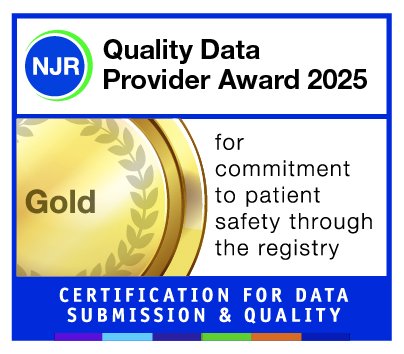
When it comes to that time of the month, it is ok not to feel ok. You can be tired, feel sore or moody. But if you struggle to get out of bed, are in constant pain and unable to deal with your daily activities because of your period, it is not normal. During Endometriosis Awareness Month, we want to raise awareness on this often overlooked condition, and make more women aware of symptoms and treatments available. Mr Onsy Morris, one of our Consultant Gynaecologists at New Victoria Hospital, provides some important information on endometriosis and its treatments.
Facts about endometriosis
Endometriosis is a condition that affects 1 in 10 women of reproductive age and is the second most common gynaecological condition in the UK. It is a chronic and debilitating condition, both physically and emotionally. Endometriosis, not only causes heavy and painful periods but may also make it difficult for you to get pregnant. It can, in fact, lead to infertility, if not diagnosed and treated promptly.
Symptoms and repercussions can be so severe that it is difficult to have a good quality of life. Sometimes you are unable to go to work or look after your children. Endometriosis can affect your social life, the relationship with your partner and your mental health.
The BBC, together with Endometriosis UK, conducted a study on endometriosis involving 13.500 women. Nearly all of them stated that endometriosis negatively affected their career, sex life and mental health. 50% of them said they experienced suicidal thoughts, and many rely on prescription painkillers to cope with symptoms.
What is endometriosis?
Endometriosis is a condition in which the cells of the lining of the womb, the endometrium, are found outside of their normal place; usually in the pelvis, in or on ovaries, fallopian tubes and the tissues surrounding the womb, bladder and bowel.
Each month these cells react to the hormonal cycle in the same way as the lining of the womb causing bleeding in the pelvis. This causes pain, inflammation and scarring, called “adhesions”, that makes organs stick together, distorting the normal anatomy in the most severe cases.
What causes endometriosis
Endometriosis is not an infection, is not contagious, and is not cancerous either. Although there are several theories, the exact cause of endometriosis is unknown.
Some of these theories link endometriosis to an immune dysfunction, a genetic condition, the lymphatic system that transports cells to other parts of the body, and metaplasia that happens when the cells transform to adapt to a new environment.
What are the symptoms of endometriosis?
The most common symptoms include:
- Painful and heavy periods – the pain often begins a few days before the period and lasts throughout the period affecting daily activities and quality of life
- Pain in the lower tummy or back – sometimes constant but usually worse around period time
- Pain during or after intercourse – the pain is typically felt deep inside
- Bleeding in between periods
- Pain during bowel movements or when passing urine
- Difficulty becoming pregnant
- Fatigue – a 2018 study suggests that fatigue is often an overlooked symptom, but it was reported by over 50% of women in the study and might be caused by the activation of the immune response to endometriosis lesions
How is endometriosis diagnosed?
The symptoms caused by endometriosis vary and can be caused by other conditions, but if you experience any of them, it is important to see your GP or Consultant Gynaecologist.
The first step in diagnosing endometriosis is to take a thorough history of the symptoms that could be due to this condition. A pelvic examination will help to highlight any tender areas in the pelvis and identify any cysts that may be present.
This can be assessed further with an ultrasound scan. It is important to note that normal pelvic examination and normal ultrasound scan do not rule out endometriosis, but both are useful when planning further investigations and treatment.
A laparoscopy is needed to make a precise diagnosis of endometriosis
The only way to diagnose endometriosis is by performing a laparoscopy. Laparoscopy is an operative procedure, done under general anaesthetic, in which a small telescope-like instrument is inserted into your tummy via a small cut below the belly button. This allows the discovery of patches of endometriosis and the treatment of them at the same time.
During laparoscopy, and if required, the Fallopian tubes can be examined to make sure that your fertility is not affected by the condition.
What is the treatment for endometriosis?
Endometriosis is a progressive and recurring condition, and although there is treatment, there is no cure for it. On the positive side, it is a self-limiting condition as it settles after the menopause.
Whilst surgery – laparoscopy - is not the only option to treat endometriosis, it is the only one that significantly improves symptoms and your chances of becoming pregnant. An intra-uterine system that releases controlled doses of hormones is often inserted during surgery as it has been found to be helpful in preventing or delaying the recurrence of the disease.
Other options that relieve symptoms of endometriosis, particularly pain, but do not improve your chances of becoming pregnant, include painkillers and hormonal treatment, such as the contraceptive pill.
If you experience any symptoms or are concerned with heavy and painful periods, you can make an appointment with one of our Consultant Gynaecologists by calling 020 8949 9020 or book online.












